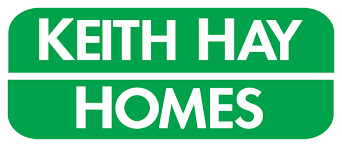You are undoubtedly aware of the media’s latest interest in hot-bedding being a way for tenants to meet accommodation costs. While there is no reliable data on how prevalent it is,
hot-bedding in rentals does happen and here are some important information for landlords to be well aware of.
What is hot-bedding?
Hot-bedding is a practice, often in rental accommodations, whereby multiple tenants share bed(room)s in shifts. The agreement to hot-bed is
usually made between tenants and often without the landlord’s knowledge that appear on the surface to be very similar to an ordinary sub-letting agreement.
More often than not, hot-bedding arrangements will involve more occupants than that is intended for a property.
Is it illegal?
It may be. The Residential Tenancies Act is silent on the maximum number of people that can occupy a rental property. However, landlords do
have the option of specifying a maximum number of occupants on the property in the tenancy agreement*. And many do as part of their risk management
practice. Additionally the practice of hot-bedding can potentially breach fire and safety regulations especially in apartment complexes.
Why should landlords care?
You should care. Hot-bedding can lead to consequences that are detrimental to the landlord including:
- Health and hygiene of tenants such as infectious diseases and bed-mites;
- Safety and security of tenants, property and the neighbourhood;
- Potential breach of body corporate rules and fire and safety regulations;
- Wear and tear of property due to an excessive number of occupants; and
- Potential impediment to cost recovery for damages to property.
What types of property/tenant are more likely to hot-bed?
While hot-bedding is a risk for all landlords and to name specific tenant groups or types of property would be a gross generalisation that will serve no
purpose other than downplaying this risk, there are a few driving factors worth being mindful of:
- Shift workers;
- Students;
- Inner city apartments; and
- Residential properties near industrial areas.
What can landlords do to mitigate the risk of hot-bedding?
Plenty:
- Thoroughly reference check your tenant applicants and only rent to the best applicant on merit*;
- Specify the maximum number of residents in your tenancy agreement*;
- Regularly inspect your property and look out for signs of overcrowding such as belongings in bedrooms that seem out of place and excessive wear and
tear; - Introduce yourself to the neighbours as the landlord of your property and exchange contact details so you can be told when things appear out of the
ordinary. Similarly in apartment complexes, build a rapport with the building manager; and - For modern high-tech apartment complexes that have swipe card facilities and entry/exit logs, keep an eye on these logs and investigate when records
appear to be out of the ordinary.
To put it all very simply: be present, be involved and be aware.
In a market where rents are (quite expectedly) on the rise, the pressure to meet costs can conceivably lead some tenants to hot-bed. As an organisation
we are not in favour of this practice as we hold dear the virtue that as landlords we have an interest in the health and wellbeing of our tenants as
well as the business performance of our portfolios. We believe that accommodation costs is a real issue facing Aucklanders and look forward to
taking part in constructive dialogues with key stakeholders to bring about change.
* APIA hosts regular workshops on landlording including how to properly reference check a tenant applicant and what to include in a tenancy agreement. Keep an eye on our events page for upcoming workshops.















Add Comment